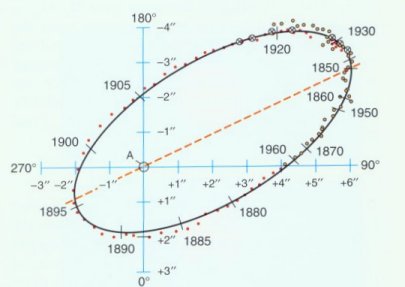
 |
The binary orbit: 70 Ophiuchi B is seen in elliptical orbit about 70 Ophiuchi A (though in reality, each orbits a common center of mass). Since the orbit is tilted by 59 degrees to the plane of the sky, the true major axis of the ellipse (the dashed red line) does not seem to line up with axix of the projected ellipse. (Yerkes Observatory, used by permission, as rendered in Astronomy, J. B. Kaler, HarperCollins, 1994.) |